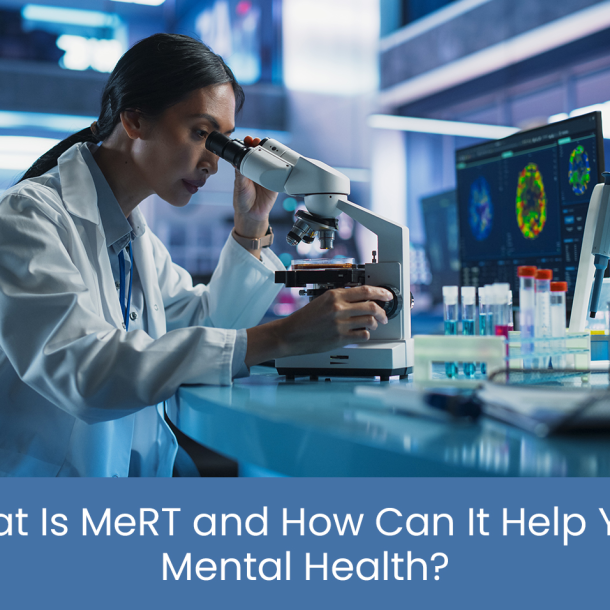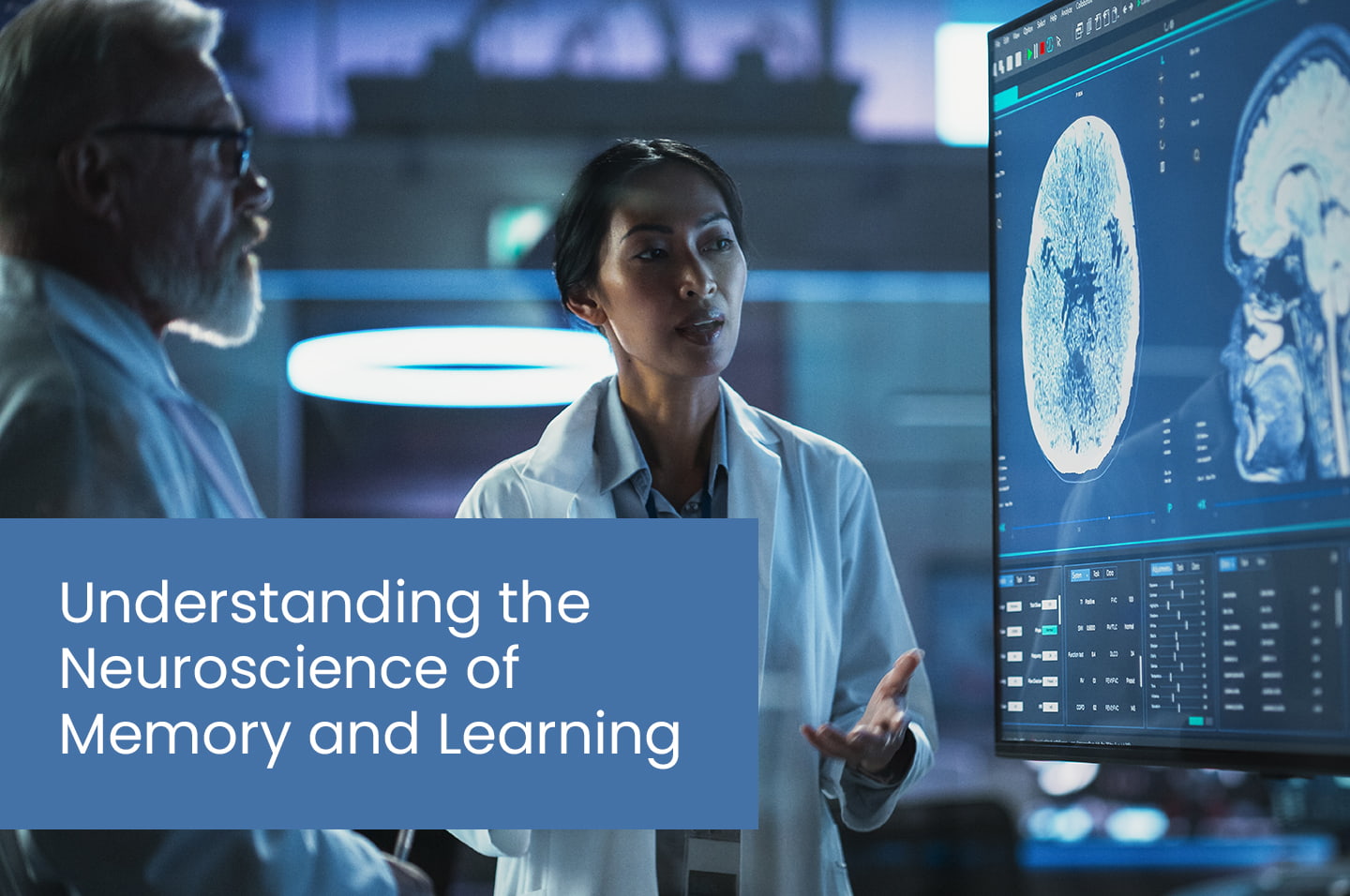
Understanding the Neuroscience of Memory and Learning
- Home /
- Understanding the Neuroscience of Memory and Learning

In the 1950s, a man named Henry Molaisan, known as patient H.M., underwent brain surgery to treat epilepsy. What followed was unexpected and devastating. He lost the ability to form new long-term memories. Every person he met and every meal he ate felt brand new, even minutes later. It was as though time, for him, had stopped.
What his condition has elucidated is this: memory is not a vague or passive process. It’s biological and structured. And it is deeply tied to specific parts of the brain, including the medial temporal lobe and hippocampus.
The hippocampus is a subcortical structure, meaning that it lies deep within the brain. It is central to forming new memories, especially those tied to time and place. Working alongside it, the prefrontal cortex helps track unfolding thoughts, links ideas across time, and filters out what can be let go.
Just as critical is the amygdala, a small almond-shaped region responsible for tagging memories with emotional meaning. It’s the reason you might remember your first date or graduation more clearly than what you ate last Wednesday.
Together, these areas of the brain form a network that allows you to learn from experience, to reflect, and to adapt.
The Neuroscience of Memory: What happens when we remember?
The neuroscience of memory is a complex process that unfolds in stages. It is through encoding, storing, and retrieving that memory operates. Although these three aspects operate distinctly, they each rely on one another completely.
Encoding begins when sensory input becomes attention. You might see, hear, or touch something. However, only when your brain assigns meaning, through semantic, visual, or acoustic encoding, will that information become useful.
Then comes storage. If the information is emotionally charged or repeated enough times, it may be transferred to long-term memory; otherwise, it fades.
Retrieval is the third step. You recognize a face, recall a scent, or relearn a language. Retrieval may happen effortlessly, or it might require cues. However, it cannot happen at all if memory circuits fail to engage.
Memory Is Not Set in Stone
Memories are not stored like files in a drawer; they are reactivations of networks, reassembled in real time. This means that they can evolve. You can strengthen them, alter them, or lose them altogether.
This flexibility is made possible by neuroplasticity. Neural pathways shift over time. Some are strengthened by use, whereas others weaken when they’re no longer needed. That adaptability supports brain learning at every stage of life.
Memory is used in ways you may not always notice. It guides what you say, how you react, and where your attention goes. Routines are followed because they’ve been remembered. Decisions are shaped by what has been learned.
When memory starts to slip, daily life can begin to feel unfamiliar. Tasks may take longer. Conversations may require more effort. And the sense of ease you once relied on may be harder to reach.
Understanding Short-Term Memory Loss
Short-term memory allows you to remember a phone number, follow a conversation, or finish a sentence—but it’s fragile. When it is impaired, simple tasks feel disjointed.
Memory disruption can stem from many causes. Sleep deprivation, stress, depression, and even medication side effects may all interfere with memory.
Neurological injuries and degenerative disorders, such as Alzheimer’s or Parkinson’s, can cause more severe memory impairments. Non-invasive brain stimulation therapies, including MeRT, are a promising approach for improving memory, especially when these disruptions begin to impact one’s independence.
Realigning Brain Rhythms for Cognitive Clarity
Before exploring what MeRT can offer, consider this: if memory decline involves disrupted brainwaves, would restoring those rhythms help?
This is exactly what MeRT (Magnetic e-Resonance Therapy) sets out to do. It uses magnetic pulses to stimulate brain regions identified as dysregulated. Each treatment plan begins with an EEG, or electroencephalography, which records the brain’s electrical activity and helps identify areas that may be underactive or overactive. These readings are then used to create a personalized map of brainwave patterns to guide stimulation.
The treatment is non-invasive and completely individualized. It has been implemented as a useful treatment to improve cognitive functioning in individuals with an array of psychiatric, developmental, and neurological conditions, including major depressive disorder, autism spectrum disorder, Alzheimer’s disease, and traumatic brain injuries.
How MeRT Supports Memory Improvements
The brain thrives on balance. When that balance is lost, symptoms arise. MeRT helps restore timing and rhythm between brain regions, which improves how information is processed and retained.
MeRT was developed to support the restoration of those internal rhythms. Using magnetic pulses, this therapeutic approach targets specific brain regions that have been identified as dysregulated. What has been observed repeatedly is that memory improvement occurs more reliably when brain activity is rebalanced rather than overridden.
Patients often report improvement in focus, clarity, and recall. While outcomes differ from person to person, the goal remains the same: to help cognitive processes run more smoothly.
The Role of Neuroplasticity in Learning
The brain, when stimulated correctly, can change itself. With the right type of stimulation for brain learning, this adaptability can be encouraged. Transcranial magnetic stimulation (TMS) can increase neurogenesis (the growth and proliferation of new brain cells) in the hippocampus, which is the region responsible for memory consolidation.
These changes are thought to support improved cognitive functioning. MeRT follows the same principle by creating the conditions necessary for the brain to adjust existing networks. Rather than teaching the brain something new, the therapy allows it to operate more efficiently.
Beyond memory improvements, gains have also been noted in emotion regulation, mood, attention, and impulsivity. These enhancements are frequently long-lasting when the treatment is individualized.
What You Might Notice After Treatment
After treatment, improved recall is commonly reported. Words may come more easily to mind. Distractions may feel less intrusive. In frequent cases, better sleep or a calmer mood is also observed.
While MeRT is not considered a cure, it has served as a useful aid to recovery for many. Even modest gains have been described as meaningful by those who have experienced prolonged brain fog or cognitive fatigue.
To Summarize: Memory Is Not Fixed
Memory responds to input, and it adapts with time. Also, in many circumstances, memory can improve.
MeRT is one approach that aims to restore communication across memory-related networks through non-invasive, personalized care. Whether the goal is to regain clarity after injury or to support cognition as it changes with age, the potential for progress remains.
To learn more about how MeRT may support memory, focus, and your overall well-being, or to or schedule a consultation, contact Neurosync Brain Treatment Centre at 365-799-8438, email us at neurosyncbtc@outlook.com, or submit a form online.
Working Hours
Email: neurosyncbtc@outlook.com
Woodbridge. ON. L4L 1A6

